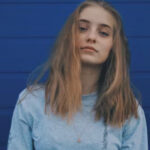Pain is a universal human experience, whether it’s caused by an injury, chronic condition, or simply the wear and tear of everyday life. While there are various approaches to managing pain, heat and cold therapy have been trusted methods for centuries. These simple yet effective techniques can provide significant relief from discomfort, promoting healing and enhancing overall well-being.
Understanding Heat and Cold Therapy
Heat and cold therapy, also known as thermotherapy and cryotherapy, respectively, are non-invasive methods that harness the power of temperature to alleviate pain and reduce inflammation.
Heat Therapy:
Heat therapy, often referred to as thermotherapy, involves the application of warmth to the affected area. It helps by improving blood circulation, relaxing muscles, and reducing stiffness.
Cold Therapy:
Cold therapy, or cryotherapy, involves applying cold or ice to the injured or painful area. It works by constricting blood vessels, reducing inflammation, and numbing the affected area, which can provide immediate pain relief.
When to Use Heat Therapy:
Muscle Stiffness:
Heat therapy is particularly effective for easing muscle stiffness. Whether it’s a result of a strenuous workout or simply waking up with a stiff neck, applying a warm compress or taking a warm bath can help relax tight muscles.
Chronic Pain:
For chronic conditions like arthritis or fibromyalgia, regular heat therapy can provide consistent relief. Heating pads, warm baths, or heat wraps can be used as part of a pain management routine.
Before Physical Activity:
Applying heat before physical activity can help loosen muscles and reduce the risk of injury. This is especially beneficial for athletes and individuals engaging in rigorous exercise.
When to Use Cold Therapy:
Inflammation and Swelling:
Cold therapy is excellent for reducing inflammation and swelling caused by injuries such as sprains, strains, or bruises. Applying ice in the initial 48 hours can limit the extent of swelling.
Acute Injuries:
For acute injuries like ankle sprains or minor burns, immediate cold therapy can minimize pain and prevent further tissue damage.
Migraine or Headache:
Applying a cold pack to the forehead or neck can provide relief from migraines or tension headaches by numbing the area and reducing blood flow.
The Benefits of Heat and Cold Therapy:
Pain Relief:
Both heat and cold therapy offer effective pain relief by targeting different aspects of pain. Heat relaxes muscles, while cold numbs the area, providing immediate relief.
Reduced Inflammation:
Cold therapy reduces inflammation by constricting blood vessels and slowing down the inflammatory response. This can speed up the healing process and reduce swelling.
Improved Circulation:
Heat therapy promotes blood flow, bringing essential nutrients and oxygen to the affected area, which aids in healing and recovery.
Muscle Relaxation:
Heat therapy helps relax tight muscles, making it easier to stretch and move. This can be especially beneficial for individuals with chronic muscle pain.
Versatility:
Heat and cold therapy are accessible and versatile. Hot water bottles, heating pads, cold packs, and ice cubes are readily available and can be used at home or on the go.
Precautions:
While heat and cold therapy can be highly effective, it’s crucial to use them correctly to avoid any adverse effects:
Duration:
Limit the application of heat or cold to 15-20 minutes at a time to prevent skin damage.
Protection:
Always use a cloth or towel as a barrier between the heat or cold source and your skin to prevent burns or frostbite.

Consultation:
If you have underlying health conditions, consult a healthcare professional before using heat or cold therapy, especially if you are unsure which one is appropriate.
In conclusion, heat and cold therapy are simple yet powerful tools in managing pain. Whether you’re dealing with a muscle strain, chronic condition, or a sudden injury, these therapies can offer substantial relief and promote healing.
When used correctly and in conjunction with other pain management strategies they can significantly improve your quality of life and keep discomfort at bay.
Contact us at NorCal Pain Treatment Center we can help you explore the most suitable options for your specific needs and conditions.















